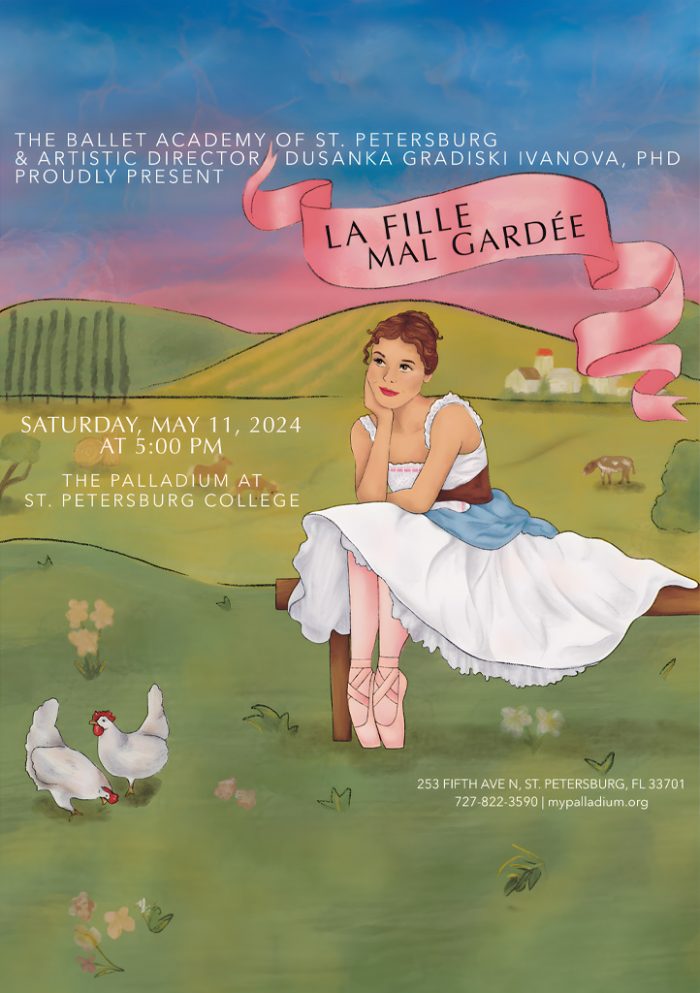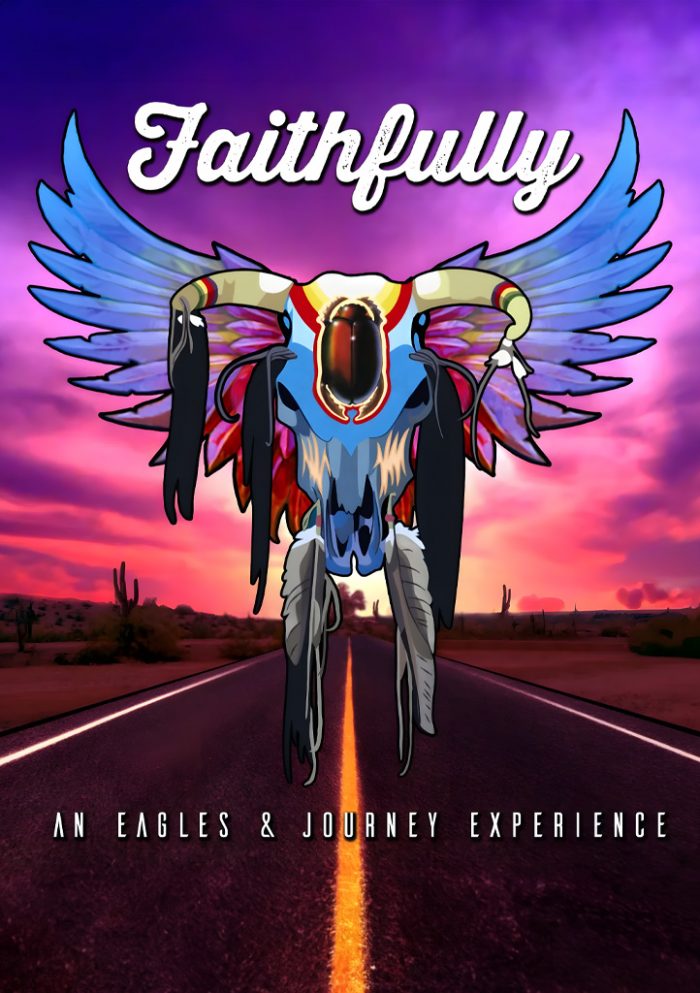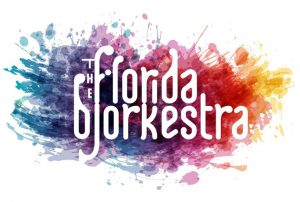Our new development manager, Monica Kile, and her family are the main feature in this week’s issue of Creative Loafing.
It’s the first public sharing of what Monica and Jon’s friends all know – that Jon’s genetic condition is life-threatening and that the family of four has vowed to live in the moment – making as many memories as they can.
I’ll let the rest of the story unfold and I’ll only say here that we are so lucky to have Monica working with us at the Palladium a few days a week. Because of that we get to make some memories of our own with her family at concerts, fundraisers and other events.
To see the entire story you can follow this link to CL Tampa. The piece was written by one of my favorite CL writers and editors, Cathy Salustri. Enjoy.
By Cathy Salustri
In December 2015, Jon Kile, in his early 40s, had a ruptured iliac aneurysm, which was unusual but not unusual enough to assume life as he knew it would change forever. Surgeons fixed him and sent him home. Four months later his daughter, Anna, had a cold and stayed home from preschool. That’s when he collapsed. He tried to dial 911, but his fingers were too sweaty to use his iPhone. He blacked out.
What he didn’t know at the time — what he couldn’t have known — was he was having an aortic dissection, that his aorta’s layers were splintering and he was about to die.
When he came to, he saw Anna’s face, framed by tiny blonde curls, looking down at him, crying, “Daddy!”
He managed to dial 911, but he couldn’t tell the dispatcher where he lived. 911 triangulated the call and found him.

James Kile
“She saved my life,” Kile says of his daughter. “I tell her that all the time.”
His life, it would turn out, would need saving more than once. After open heart surgery for the aortic dissection, doctors found a rapidly enlarging aneurysm on his other iliac artery and went in to repair it. When they entered his femoral artery, the femoral ruptured, and they couldn’t operate. They scheduled him for surgery at the Cleveland Clinic but his body wouldn’t wait — he developed a deep-vein thrombosis and needed surgery immediately. In all, he’s had seven surgeries.
The morning before Jon and his wife Monica boarded a small plane to rush him to Cleveland, Monica sat at St. Anthony’s Hospital in a common area. Under her perennial tan, her face was gray. She clutched a thick binder of her husband’s medical records. Every time he went into surgery, she didn’t know if she’d ever hold his hand or talk to him again. She had no idea if her children would know their father. And no one knew why this was happening.
Jon’s diagnosis was so rare, it’s not shocking it took doctors months to find it: Vascular Ehlers-Danlos syndrome, an inherited connective tissue disorder resulting from a mutated COL3A1 gene. Upon reflection, Jon and Monica believe VEDS killed his mother, who died at 36, when Jon was five.
“We can assume she had a sudden coronary artery dissection,” Monica says. VEDS is not curable; Jon will keep getting aneurysms. He travels to Cleveland annually for scans. Surgeons and doctors will do their best to detect and repair the aneurysms, but that’s not a cure — and it’s far from ideal. Jon’s blunt: he doesn’t know how long he has. It could be 20 years; it could be 20 days.
This was not supposed to happen to them. They met at the book launch for one of Monica’s former professors; they still have a poster of his book, Land of Sunshine, State of Dreams, framed in their living room. They dated, then they moved into the Beacon in downtown St. Pete, a condo not so far from Jon’s job at USF. They married. They had a son — James — who almost instantly sprouted a mop of curls like his mom’s. They traveled, James riding in a baby backpack on his dad’s back as they toured Switzerland. Upon their return stateside, Monica learned she was pregnant again, and Anna made her appearance with ringlets not unlike her brother’s. Jon had left USF to take a job selling oil. Monica worked part time — first at Tiger Bay, then at St. Petersburg Preservation (now called Preserve the ’Burg). They moved to Gulfport, sold the Beacon condo, saved their pennies, and bought a two-story home in their dream neighborhood, Old Northeast. Once Anna started full-time preschool, Monica took a full-time job at Osher Lifelong Learning Institute at Eckerd College.
Six months later, Jon’s illness reared its head.
Monica went into tigress mode with Jon’s health.
“I wouldn’t have survived [without her],” Jon says. “She got me in front of the best doctors in the world. She took the worry off of me, in terms of that. She stayed in the hospital room and asked the doctors the questions while I enjoyed the pain medicine.”
Monica kept working for a while, but things — well, things started to fall apart. In September, it reached a breaking point. She left her job at Eckerd abruptly.
“In hindsight I realized I had too many balls in the air that I was trying to keep spinning. When you’re doing that you don’t realize the toll that’s having on your physical and mental health,” she says. “Once I decided to stop spinning and let it all fall, I was like, ‘what do I want to do?’ We wanted to spend time with our kids, travel.”
They bought a 2002 Dodge Ram conversion van and a tent that attached to the back of it. They canceled cable and put the kids in public school (“we didn’t want to pull them out of school totally,” Monica says). They started taking weekend trips camping. Next weekend, they’ll embark on a two-month cross-country camping trip — they’re taking the kids to the Smokies, Mesa Verde, Canyonlands National Park, Santa Fe, Glacier National Park, the San Juan Islands, Mount Rushmore, Hood River… the list is mountainous and enviable. They’ll come home the end of July.
Part of how they can do this is thanks to what they call the “Cadillac” of disability insurance policies. In high school, Monica broke her back in a car accident.
“Having been in that car accident — and my brother was hit by a car six months before I was — I knew from a young age it was important to cover yourself in that way,” she says. So when Jon took the oil job that put him on the road most days, they bought a long-term disability policy — to the tune of $300 a month. He also paid the $5 a month for employer-sponsored disability insurance.
It was a hefty chunk of change, but a wise decision: between the two policies, Jon still gets a majority of his salary. Plus, the company converted their life insurance to whole life, and it pays the premium. There’s no doubt that’s helped, but the Kiles still make sacrifices. Monica hasn’t quit working entirely — she takes on contract grant-writing projects — and they’re paying $1,700 a month in health insurance, a figure likely to increase once they go off the COBRA plan. They drive two paid-for cars and their house is filled with hand-me-downs.
“Literally everything in our house comes from thrift stores, or it’s been given to us,” Monica says. But, she says, “We don’t worry about that shit anymore. That’s part of this gift. All we have is today.”
“It’s about being in the moment,” Jon says. “I had the mask put over my face many times when I did not know if I would wake up. The odds were not in my favor.”
Anna was three years old when she saved her father’s life. Monica thinks a lot about what their lives would be like if Anna hadn’t stayed home from school that morning.
“If he had died — which it’s amazing he didn’t die — she wouldn’t remember him at all. I’m so grateful they’re getting to have those memories with them. He doesn’t remember his mother; he has a handful of memories. I want to pack as much into our kids’ lives as possible. I realize how close we were to not having him. All these trips, it’s really about spending time together.”
Jon and Monica say the experiences have changed the kids, too. They’ve taken to camping and the outdoors, big time.
“Our daughter is capable of experiencing great discomfort when it serves her,” wrote Jon in his blog of the family’s maiden van camping voyage to the Florida Keys, “but she was walking around barefoot in the gravel and begging to go swimming.”
At a recent trip to Fort De Soto’s east beach, James, now 8, and Anna, who is a worldly 5, took turns identifying crabs and mollusks they’d discovered. They are growing up Florida-style, a la Mullet Fingers in Carl Hiaasen’s Hoot. They paddleboard, they hike, they fish — and they do it all with their dad, as his health allows (he can’t lift more than 30 pounds or get his heart rate and blood pressure up too high).
“Everything now is through this lens, ‘Look at this they got to do with Jon, look at this thing we got to do as a family.’ [The kids] talk about, ‘Remember this, remember that.’ The more you talk about [the experiences] the more they become lore,” Monica says.
“A lot of people, all they can imagine when they put themselves in our shoes is the terror and the fear,” Monica says. “And that’s real and it happened, but we realize how lucky we are. You had to appreciate that heartache to appreciate what you still have. Our whole axis shifted to gratitude.”
Jon Kile Vascular Ehlers DanosLOVE BUG: In a few years, James will be embarrassed of his dad’s van. Not right now, though.Cathy SalustriWalking home from dinner a few nights ago, James looked up at his parents and said, “I love my life.”
“And they do. I can see it,” Monica says. “We’re present and we’re there in a way we weren’t before.”
Some might see Jon’s illness as the beginning of the end, but for Jon — and his family — it’s not only changed their lives, it’s offered them a new, better life.
“If I had known in my 20s what I know now, I probably would have pursued a career in writing or something that was more meaningful to me instead of doing what was the path of least resistance, career-wise,” Jon says. “You shouldn’t need a terrible medical diagnosis to make choices that reflect what makes you happy and what are your values.”

Getting ready to go!
A word from Jon Kile…
Vascular Ehlers-Danlos Syndrome, or VEDS, is a genetic condition affecting the production of collagen, the building block of our arteries. It is life-threatening and there is no treatment. VEDS is so rare, few vascular surgeons ever see a case. And if they do, they usually realize it at the patient’s autopsy. I was lucky to be diagnosed through genetic testing at the age of 42, after a series of spontaneous ruptures of aortic aneurysms, including a Type-A Aortic Dissection.
I had six major surgeries in six months and now visit the Cleveland Clinic twice a year for checkups with some of the best vascular doctors in the world. My mother died at the age of 36 years old, never knowing she harbored a dangerous genetic disorder. I am fortunate that medicine and genetic testing have evolved to the point that I am living with my diagnosis. I am determined to do whatever I can to to increase awareness and research funding, for myself, my family, and other unsuspecting carriers of this genetic abnormality.
To that end, I’m thrilled to support my wife Monica as she runs the New York City Marathon as part of the John Ritter Foundation team. The John Ritter Foundation works to promote knowledge of aortic aneurysm and dissection through research and education. They are currently conducting an important study of VEDS in mice, and work tirelessly to increase awareness and access to genetic testing for people at risk of aortic abnormalities.
Our family has been incredibly fortunate on our journey with VEDS. We’ve had many people ask how they can help us along the way. We can now proudly ask them to support Monica’s run by visiting her NYC marathon page at crowdrise.com/monicakile








Leave a Reply